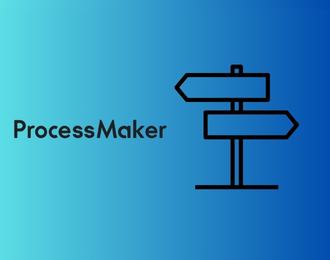Digital transformation of the Healthcare system has been a much anticipated, and long overdue, phenomenon. Finally, it’s taking hold – sweeping through the various departments (patient-related, HR, finance, operational) and uncovering vast opportunities for improvement. For an industry in which both safety and speed are crucial, automation technology couldn’t be more welcome.
Introduction
In healthcare, processes are everything. And the way processes are completed (the speed and safety of) can be the difference between a life saved or not. As such, institutions are placing more emphasis on process improvement ideas in healthcare and on what a good process looks like in the industry. Let’s take a deeper look.
Healthcare process overview
The healthcare industry still operates via manual processes and an overreliance on email/ spreadsheets. Administrative and labor-intensive tasks are slow to complete, and manually entering data means errors and oversights. For processes where lives are at stake, new methods are required to facilitate accurate data entry and greater efficiency.
Enter process automation: a line of automation technology which automates (partly or fully) complex business processes.
In healthcare, technology is being used mainly in administrative roles, helping hospitals and clinics deal with high patient turnover and ongoing administrative duties. But the benefits are far-reaching and long-term, and provide advantages right along the value chain, including:
- Visibility and accountability across healthcare processes
- Cross-departmental knowledge sharing
- Reduction in bottlenecks and inefficiencies
Let’s look at some process improvement ideas in healthcare, and how process automation can transform departments in hospitals and clinics.
See the full stack of healthcare automation tools.
Methodologies to improve healthcare process
HR: Employee Onboarding and Offboarding In Healthcare
A high staff turnaround in healthcare makes employee onboarding/offboarding a priority. Better onboarding also improves employee retention rates (typically low in organizations like the UK’s NHS) and builds up a team’s competence.
Automating the onboarding/offboarding process in healthcare has many benefits. It standardizes the process, saves hours spent on administrative work, and provides a higher rate of satisfaction for recruits.
A successful onboarding experience can mean the difference between a recruit leaving within the first year or becoming a loyal employee. For an industry that desperately wants to retain staff, process automation is essential.
Onboarding/ offboarding temporary agency staff is also streamlined with process automation. When employees arrive on the ward, access to systems can be quickly provisioned.
This gives temporary workers the opportunity to begin their work faster and be more productive on a shift. Offboarding, with automated tools, is similarly a quick process, which generates a fast turnaround of staff (crucial in this sector) and facilitates the movement of staff between different hospitals and clinics.
HR: Performance Appraisal In Healthcare
Performance appraisal is typically a time-consuming and administration-heavy process – and no different in the healthcare sector. Distributing appraisal forms to the relevant parties, and collating results can take a significant amount of time, especially when iterated for a high number of employees (as it is in hospitals).
Automating the appraisal process instantly streamlines it. Performance data is distributed, collected, and collated using a single platform.
The process itself (with automated prompts, and a move away from manual or paper-based forms) is rapidly accelerated, giving HR staff more free time. Customers can also roll out self-assessment through the tool, where results are instantly received by HR.
Patient-related: Bed Occupancy
Admitting patients into the hospital can be like a complicated game of Lego, in which administrators need to work out the best arrangement. Does this patient go here – and we move this patient there?
Historically, hospital admissions have been managed by a human team, but managing hundreds of beds and patients is a difficult task – and oversights and errors often occur. Human scheduling doesn’t always lead to the best decisions – and sometimes a brick (or bed) will get missed.
When bed management is automated, decisions are simplified. Administrators have real-time information about the status of a bed (which manual data entry doesn’t provide). This allows administrators to plan for the efficient use of beds, and also adapt to changes in real-time. For example, a suddenly vacant bed can be occupied more quickly when that data is immediately available to administrators.
Patient-related: Theatre Notes
The value of digitalizing theatre notes is being seen across hospitals. Manual data entry, or the use of paper forms, has been proven to:
- Undermine the quality of data
- Result in miscommunication and misinformation
- Generate errors along the process line
With a central digital platform for theatre notes, and simple templates to work from, note-taking can be dramatically improved. Requisite fields for data entry ensure that data is complete. Digital lettering means less misinterpretation and human error.
A connected platform means better data collation and reporting. Patient notes are synced immediately, which means they are available to access before a patient returns from the theatre. This gives hospital staff the time to prepare resources and plan the next steps.
Compliance: Incidence Reporting
Hospital staff fail to report 86% of incidents, partly because they are not sure what constitutes patient harm, and partly because of a high patient turnover and demand. Reporting on incidents often slips through the cracks.
Automating this process allows it to be completed accurately and with speed. An easy-to-use interface means a bigger uptake of the technology – and more incident reporting completed. Requisite data fields mean a complete set of information, fewer errors and oversights, and less need for extra information.
Reporting can take place in a clean, swift way – and digital forms provide staff with a new immediacy (unlike paper forms, which can take time to hunt down and complete).
Operational: Hospital-to-Hospital Transfer Form
Before digitalization, it was difficult for hospitals to stay connected. But automation technology is changing all that. With manual, or paper-based patient transfer forms, documents are typically scanned and sent via email – a stagnant and unreliable way of sending sensitive data.
With automation, pre-built digital forms allow data to be entered, sent, and received quickly and securely. The transfer is immediate. This saves time for administrators completing the forms while ensuring that patient wait time is reduced (staff have quick access to information) and improving the patient experience overall.
Learn more about Blackpool Teaching Hospital NHS as they drive enhanced patient experience and operational excellence with digital process automation.
How FlowForma Helps Healthcare Businesses
The healthcare industry is making some big changes when it comes to process management. Hospitals and clinics globally are seeing the benefits of automation in real-time.
Paper shackles potential. Paper forms take time to locate, fill in, and file. And then to access once again. They also create data silos and are vulnerable to errors and misinformation. For institutions that need to protect their patients and staff, they are too risky to use.
Conclusion
Automated digital tools not only streamline processes throughout healthcare, but they help to keep hospitals compliant. They improve safety and patient experience and help to accelerate administration for the processes which matter most.
Process improvement ideas in healthcare start with automation. Book a healthcare demo today.
.png) By
By 



